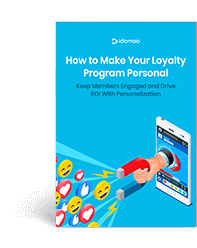Churn management is an important component of any business. Retaining customers is more costly than acquiring new ones, so it’s vital that you understand how to keep your current clients happy and engaged.
To help your business drive long-term loyalty, we’ll cover how to perform and optimise churn management by analysing data from past interactions with customers. We’ll also cover various ways that you can use churn management techniques within your organisation, including improving customer satisfaction, measuring customer loyalty, identifying problem areas within your business and implementing effective retention strategies.
Churn Management Explained
Churn management is the process of keeping your customers happy and loyal. It’s a key part of customer retention, but it also can lead to increased revenue and a healthier bottom line. If you can provide a great experience that makes customers want to stick around, they’ll likely be more willing to pay more for your product or service in the long run.
It’s important to note that there are two types of churn: voluntary and involuntary.
- Voluntary churn occurs when customers choose not to continue using your product or service.
- Involuntary churn happens when it is impossible for customers to continue using your product or service (like losing access).
While both types are important in terms of growing your business, it’s especially helpful if you’re able to reduce involuntary churn through strategies like upselling and cross-selling.
Why Churn Management Is Important
Churn management is important because it reduces your revenue loss. If you are losing customers, then your overall sales will be affected and you might not be able to meet the goals set by your organisation in terms of revenue generation.
Plus, keeping track of the churn rate allows your business to identify and resolve problems before they get out of hand. You should know how many customers are leaving each month or year because this can help to determine whether the reason for their departure has been addressed appropriately.
The reasons for a high churn rate can vary depending on your industry, but common causes include:
- Poor product quality
- Ineffective customer service
- High prices
- Low value added services (VAS)
How To Measure Churn
The idea behind churn management is simple. If you know what your churn rate is, then you can estimate how many new customers you’ll need to bring in order to maintain the same revenue stream over time.
Let’s say a company has 100,000 customers and 10% of them leave every year (a 10% churn rate). They’ll need at least 11,000 new customers just to stay even.
But in order to understand churn and retain customers, it’s important to first be aware of how churn rate is calculated.
Churn Rate = (Total Customers Lost) ÷ (Total Customers)
In other words, churn rate is the percentage of customers who stop using your service or product. You can also calculate churn by multiplying your subscription plan cost by twelve and dividing that number by the total number of customers you have on your plan.
This metric will give you a rough idea of how much money is being lost each month due to customer attrition. However, this method does not take into account any other factors such as expansion plans or add-on purchases, so it isn’t as accurate as calculating actual customer losses with traditional methods.
Customer Retention Strategies
Customer retention is the most important part of any business. It’s also one of the most effective ways to grow your business and improve your brand reputation.
Customer retention is like a game of tug-of-war. If you can keep pulling customers in, they’ll be more likely to stay with you. But if they can pull away from you, there’s no way for them not to go.
So how do you make sure that customers don’t get pulled away? Here are some tips and tricks to help your business prevent churn.
Retain Customers Through Data-Driven Personalisation
Personalisation is the key to customer retention, and customer data plays a critical part. Typically pulled from a business’s CRM, this data is a powerful tool for creating an engaging customer experience.
An easy way to leverage personalisation is by greeting customers by name. While it seems simple, it can grab your customer’s attention and start the customer relationship off right.
Personalisation works especially well as a way to bolster customer support. Just take a look at how Shellpoint added personal touches to this video explaining the viewer’s escrow — a topic that often confuses customers.
A personalised explanation like this effectively explains everything the customer needs to know. By showing their exact tax and insurance rates from the past, plus their increased amount for the current year, viewers can clearly see the reasons behind their escrow fee.
And don’t stop there. You can continue to personalise interactions after customers have reached out to you, such as sending timely messages that are tailored to each customer’s preferences or behaviors. For instance, if a customer recently expressed confusion about new features in a product, send a personalised message afterwards from your customer success team asking if they’re finding everything OK.
Identify At-Risk Customers
You can identify customers at risk of churning by running a cohort analysis. This type of analysis looks at how groups of customers behave over a period of time to determine what factors impact their behavior.
Cohort analyses are especially helpful for understanding customer churn because they help you identify the characteristics that make up your most valuable customers. To effectively use this data, it’s important to look at your customer base and define good versus bad customers at the outset. Then, you can create a baseline against which future actions will be measured.
Create a Seamless Onboarding Process
Your onboarding process is typically the first interaction your customers will have with your brand after customer acquisition. As such, it’s crucial that you create a seamless onboarding experience for every individual.
This should be done through a combination of automated processes and human intervention. An automated process allows you to quickly scale without adding more employees or taking too much time away from other projects, while live agents can handle more complex concerns.
For instance, chatbots can help with simple tasks such as setting up payment info or creating user accounts, but redirect customers with more in-depth questions to customer representatives.
As with any customer-facing process, it’s important to consider how omnichannel your onboarding experience is. As the name suggests, omnichannel marketing is about being present for customers wherever they happen to be at any given time.
And, as we touched on before, make it personalised. The best way to retain customers is by making them feel like they matter. It not only allows you to provide a better user experience, but it also helps customers acclimate to your product or service faster.
Add a Human Touch With Video
A staggering two thirds of consumers in a survey by PWC feel brands have lost their human touch. Video marketing is a great way to bring this back to the digital experience, and improve customer retention — which in turn can lead to more sales. By adding a human touch, you’re able to convey your brand values in a way that’s more effective than other mediums.
But some marketers are still hesitant to use video due to certain myths. For instance, over 60% of marketers choose to leave video out of their marketing efforts because they think it’s too time consuming. You don’t have to be an expert with expensive equipment, though. All you need is a smartphone or computer with video editing software.
Once you start, the options are virtually endless. For instance, the University of South Dakota brought a human touch to their digital communication with the following video.
Imagine receiving this video as a prospective student. It shows you scenes from campus life, the students and faculty that make up the school and other exciting clips that excite you for the year. Wouldn’t this engage you more than a text-heavy email?
Upsell to Existing Customers and Keep Them Happy
Upselling is a great way to increase customer lifetime value. It can be done at the point of purchase, during a transaction or afterwards.
There are many ways to upsell:
- Include a clear call to action: A vague CTA can deter customers from taking action. Make sure your CTA is explicit so upgrading is a straightforward and simple process.
- Make it relevant: Sending irrelevant offers can frustrate your customers. Personalise offers based on customer segments to show you’re offering a solution, rather than a gimmick.
- Bundle products together: Recommend products that are complementary and go well together. For instance, if someone purchases a laptop computer, offer accessories like external hard drives at discounted prices. It lets your customer save more money while getting more value out of their overall purchase.
Create a Loyalty Program
A loyalty program is an obvious, and essential, part of any churn management strategy. It can be as simple as offering discounts for regular customers or as complex as hosting an annual gala for your best clients.
However, loyalty programs are often ineffective. Research shows that members are active in less than half of their loyalty programs. And loyalty programs that go unused are not renewed.
To keep customers engaged in your loyalty program:
- Make it easy for people to join your program by including an option on their receipt at checkout or sending them an email after each purchase that explains how they can participate in the program.
- Give participants something fun to do every time they make a purchase. For instance, offer them points towards free products whenever they visit your store during certain hours of the day. Or add gaming elements, like badges, to reward customers for their engagement.
- Remind customers of what they’re getting out of their membership. Recap what rewards they earned with their program in a year-in-review video. Send an email reminding customers of their available points, and what special prizes they can earn.
Track Customer Behavior
Finally, make sure you’re tracking customer behavior. Whatever industry you’re in, collecting data can help you understand why customers leave and what you can do to improve the customer journey.
There are many ways to track customer behavior, including:
- Customer feedback and NPS scores
- Social media channels (Facebook, Twitter, etc)
- Analytics software
As you begin tracking customer behavior, it is important to understand what types of information you should be looking for. What content do your customers consume? When is churn highest during the customer lifecycle? How are your metrics performing?
Lower Churn Rates for Your Business
You now know how to measure and implement churn management to drive long-term loyalty. Make it personal. Add visuals. Create a loyalty program that customers will want to engage with.
But that’s not all. Brands looking to take their churn management to the next level are reaching customers on a 1:1 level with the format they love most — video. Whether it’s banking, insurance or even gaming, Personalised Video is a must-have for brands looking to boost loyalty.
Want to try it for yourself? Let’s talk.





